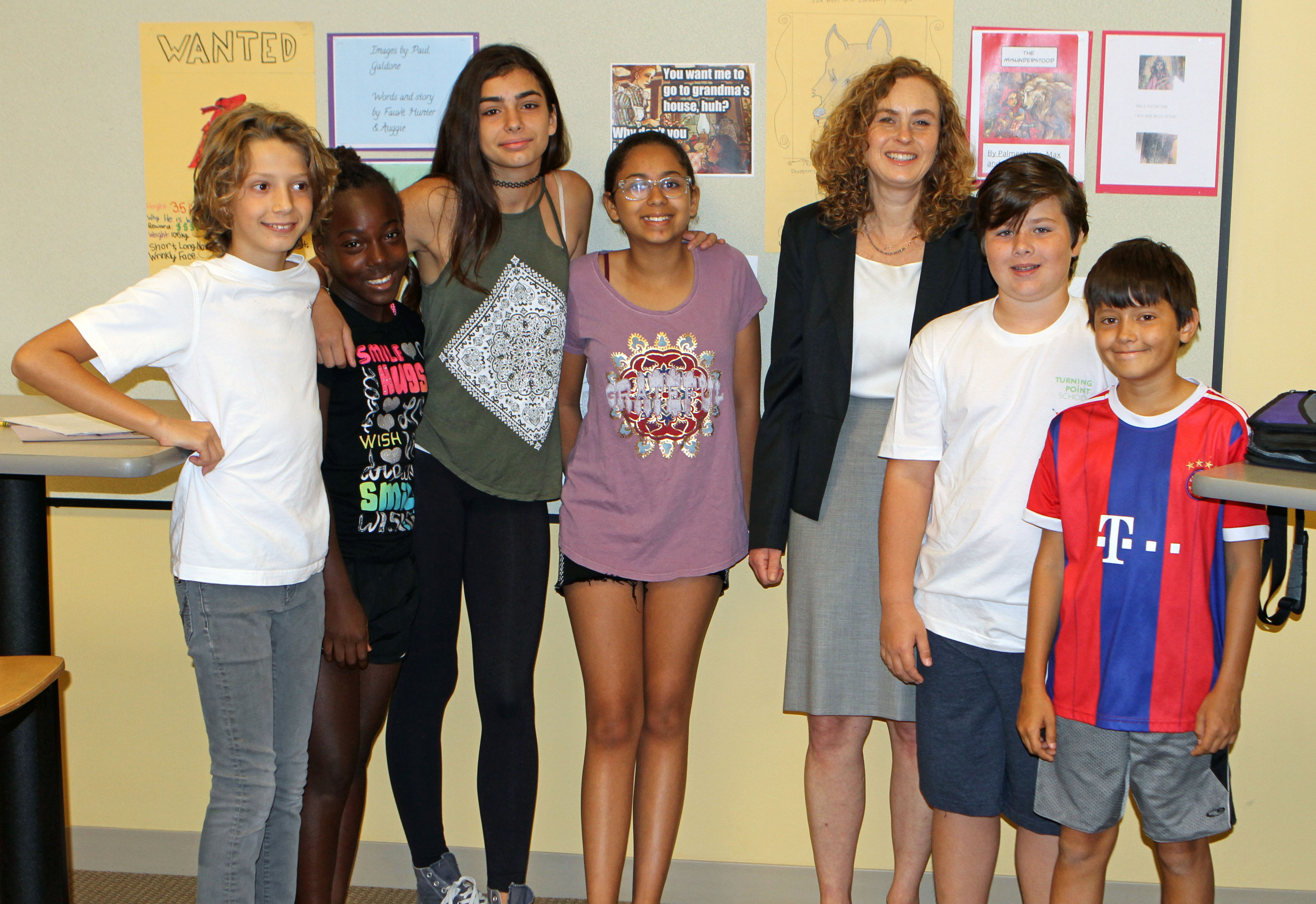 When I ask Turning Point community members what qualities they think our alumni developed at Turning Point, almost everyone says, “leadership,” “confidence,” and “problem solving.” Just talk with our Level 8 students, see them reach out to their newest Primary “family” members, recite their identity monologues, lead all-school assemblies, orient prospective families as ambassadors, research STEAM projects, and play volleyball or flag football, to experience for yourself the poise and grace with which these young people carry themselves. Experiencing their firm handshake and steady eye contact, their unwavering voices at the podium, their clever use of metaphor, their encouraging cheer of teammates, and their tender handholding of our youngest students has made me wonder if they are older teens in disguise. They carry within them knowledge, strategies, and tools that they know will hold them in good stead as they make their way into the world.
When I ask Turning Point community members what qualities they think our alumni developed at Turning Point, almost everyone says, “leadership,” “confidence,” and “problem solving.” Just talk with our Level 8 students, see them reach out to their newest Primary “family” members, recite their identity monologues, lead all-school assemblies, orient prospective families as ambassadors, research STEAM projects, and play volleyball or flag football, to experience for yourself the poise and grace with which these young people carry themselves. Experiencing their firm handshake and steady eye contact, their unwavering voices at the podium, their clever use of metaphor, their encouraging cheer of teammates, and their tender handholding of our youngest students has made me wonder if they are older teens in disguise. They carry within them knowledge, strategies, and tools that they know will hold them in good stead as they make their way into the world.
These powerful outcomes are achieved by design, not by chance.
We envision exactly what we want our graduating students to know and the skills we want them to acquire; we plan backward, ensuring that they are all part of a process that transitions students smoothly from one grade level to the next. Our various “vertical” programs, like our Family Program, Mentor/Mentee Program, or our service learning opportunities, give our older students the chance to be academic leaders and to mentor their younger counterparts; their leadership sets the tone for the rest of the school. The Turning Point program, which spans preschool through eighth grade, honors both the profound brain reshaping periods during early childhood and early adolescence, and has been shown to be a more effective developmental and learning environment than K-6 or 6-12 programs.
In fact, a recent study published in the American Educational Research Journal, showed that all middle schoolers (sixth, seventh, and eighth graders) do better academically in K-8 schools, where they feel safer, more at home, and more engaged. The study examined a “top dog, bottom dog” theory, and found that students who were “top dogs” for longer – that is, as middle-schoolers in K-8 schools – were more likely to excel in the middle school years, and also more likely to smoothly transition to “bottom dog” status in high school.
 Turning Point is committed to a K-8 program which we know produces talented, capable students ready for the challenge of any selective high school program. And when scientific data confirms the effectiveness of our practices, we know that we are excelling in our mission to produce students who are “responsible, well-balanced adults who are confident, honest, knowledgeable, community-focused, globally oriented, joyful, and well prepared to face a challenging and changing world.” That they can accomplish all this, and avoid the stress so many middle school students in 6-8 or 6-12 schools experience, is a victory for all players.
Turning Point is committed to a K-8 program which we know produces talented, capable students ready for the challenge of any selective high school program. And when scientific data confirms the effectiveness of our practices, we know that we are excelling in our mission to produce students who are “responsible, well-balanced adults who are confident, honest, knowledgeable, community-focused, globally oriented, joyful, and well prepared to face a challenging and changing world.” That they can accomplish all this, and avoid the stress so many middle school students in 6-8 or 6-12 schools experience, is a victory for all players.


































